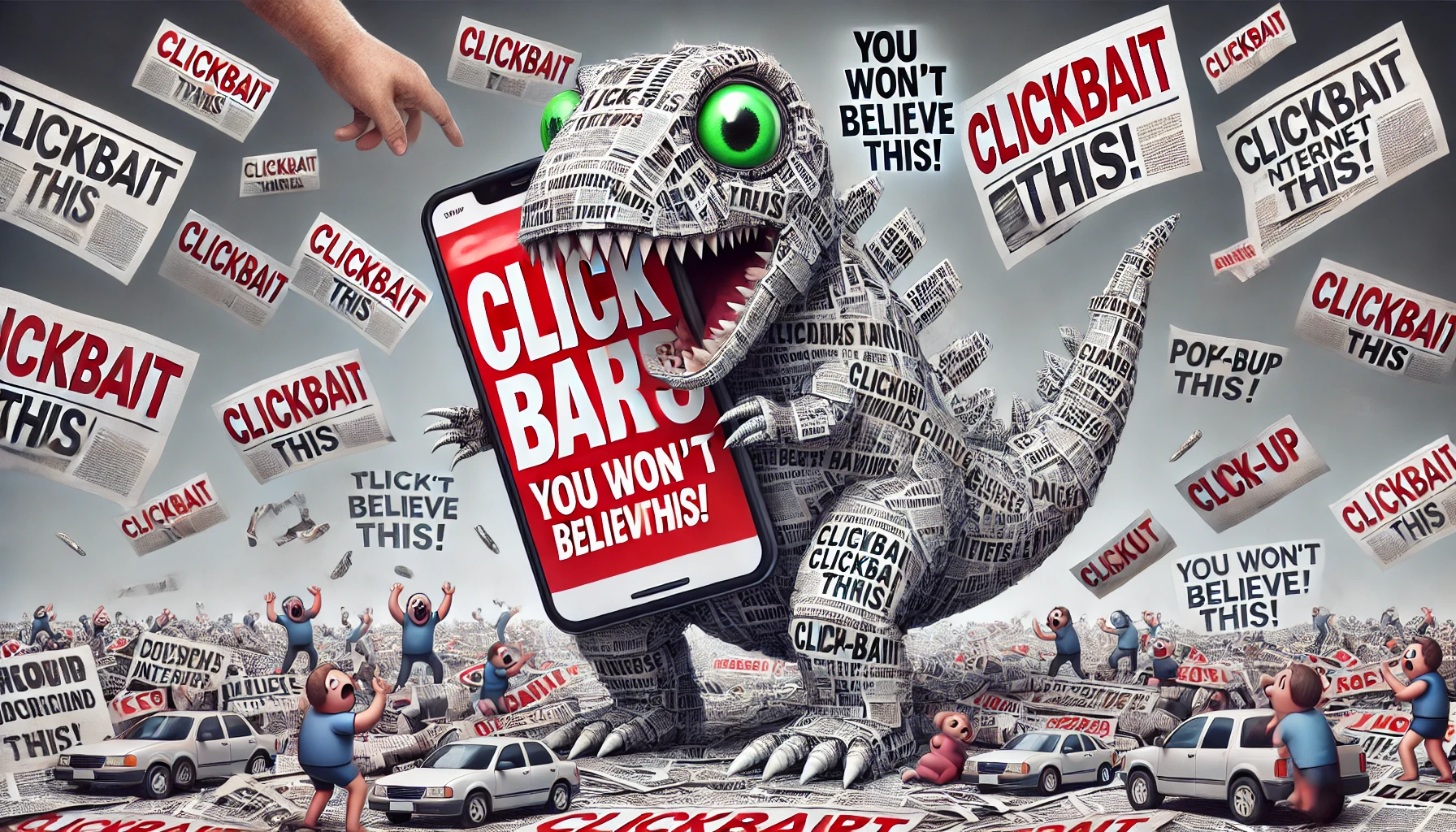
The Ultimate Guide to Clickbaitosaurus: Understanding, Identifying, and Defeating the Beast of Digital Deception
Introduction: What is a Clickbaitosaurus?
In the ever-evolving world of digital content, one creature continues to lurk in headlines and thumbnails—the Clickbaitosaurus. This satirical term merges “clickbait” with “dinosaur,” painting a picture of an outdated but still dangerous entity that thrives on manipulating user emotions for web traffic. While its tactics may seem effective at first, the long-term consequences for credibility and audience trust are severe.
Clickbaitosaurus represents the worst of digital media: sensational titles, empty promises, and low-value content designed to exploit curiosity. In this comprehensive guide, we’ll explore how it evolved, its anatomy, and most importantly—how to overcome it to create high-ranking, authentic content that builds trust and sustains growth.
The Anatomy of Clickbaitosaurus
To understand the Clickbaitosaurus, we must first dissect its form and function. It typically possesses the following traits:
- Sensationalist Headlines: Over-the-top titles that scream for attention—”You Won’t Believe This!” or “What Happens Next Will Shock You!”
- Misleading Thumbnails: Eye-catching images that often have little to do with the actual content.
- Emotional Exploitation: Appeals to fear, anger, or excitement to lure clicks.
- Content Deception: Articles that fail to deliver the promised value or answer.
While this beast may generate high click-through rates, it suffers from high bounce rates, user distrust, and poor long-term engagement.
The Evolution of Clickbaitosaurus
The Clickbaitosaurus didn’t appear overnight. It evolved over the last two decades as a product of internet and media dynamics:
Early Days (2000–2010)
During this era, simple and direct titles were replaced with dramatic headlines designed to drive traffic. Sites like BuzzFeed popularized listicles and shocking statements.
Rise of Social Media (2010–2020)
Platforms like Facebook and Twitter amplified clickbait as algorithms favored content with high engagement. This made the Clickbaitosaurus stronger and more widespread.
Algorithm Adjustments (2020–2025)
Recent search engine updates have started punishing clickbait-heavy sites. Google’s helpful content updates now reward value-driven, user-focused articles.
The Negative Impact of Clickbaitosaurus on Your Brand
While the Clickbaitosaurus may initially boost your traffic, it leads to several long-term pitfalls:
- Loss of Trust: Audiences quickly abandon websites that mislead them.
- High Bounce Rates: When users don’t find what they expected, they leave immediately.
- Damaged Reputation: You risk being blacklisted by Google or losing partnerships.
Table: Clickbait vs Ethical Content
| Feature | Clickbaitosaurus | Ethical Content |
| Headline Style | Sensational & misleading | Informative & accurate |
| Content Quality | Shallow & repetitive | Deep & valuable |
| Audience Trust | Erodes over time | Builds over time |
| SEO Performance | Short-term spikes | Long-term stability |
Spotting a Clickbaitosaurus in the Wild
Identifying clickbait content is essential for both creators and consumers. Here are a few signs to look for:
- Headlines that overpromise but underdeliver.
- Content with excessive ads, pop-ups, or auto-play videos.
- Posts with low word counts or superficial insights.
- Outdated or recycled information passed off as new.
Use tools like SEMrush, Ahrefs, or BuzzSumo to analyze high-bounce content. If your site mimics these red flags, it might be time for a change.
How to Defeat the Clickbaitosaurus
Combating the Clickbaitosaurus requires strategic content creation and ethical SEO practices. Here’s how to do it:
1. Write Honest Headlines
Craft headlines that are compelling yet accurate. Your title should spark interest while clearly stating what the reader will gain.
2. Deliver Real Value
Go beyond surface-level info. Add data, case studies, expert opinions, and original insights that fulfill user intent.
3. Optimize for Search Engines
Ensure you include:
- Relevant keywords (like clickbaitosaurus) naturally
- Descriptive meta tags
- Header tags (H1, H2, H3…) for content hierarchy
4. Improve User Experience
Ensure your site is mobile-friendly, loads quickly, and offers smooth navigation.
5. Build Quality Backlinks
Earn links from authoritative sources to strengthen your credibility and domain authority.
SEO Strategies to Outrank Clickbait Content
Winning the SEO game means focusing on value and visibility. Here’s how you can outrank even the most ferocious Clickbaitosaurus:
- Keyword Research: Use tools to discover low-competition, high-volume keywords.
- Content Depth: Aim for 1,500–3,500 words of high-quality content.
- Multimedia Elements: Incorporate videos, infographics, and charts to enhance readability.
- Internal Linking: Help users and crawlers navigate your site better.
- Social Proof: Encourage shares and backlinks through community engagement.
The Future: Is Clickbaitosaurus Going Extinct?
Clickbaitosaurus is facing extinction as digital ecosystems evolve. Search engines are getting smarter at identifying shallow content. Audiences now crave authenticity and value, not deception.
More brands are investing in ethical storytelling, long-form content, and audience-centric approaches. If you’re still relying on the tactics of the Clickbaitosaurus, now is the time to evolve.
FAQs About Clickbaitosaurus
1. Is clickbait the same as Clickbaitosaurus?
Not exactly. Clickbait is a tactic, while Clickbaitosaurus is a term symbolizing the overuse or abuse of those tactics in an outdated and harmful way.
2. Can clickbait ever be ethical?
Yes, if used to attract attention while still delivering genuine value and fulfilling the promise of the headline.
3. Why does Google penalize clickbait content?
Google’s algorithms aim to prioritize helpful and relevant content. Misleading titles and shallow posts don’t meet those standards.
4. How do I know if my content resembles Clickbaitosaurus?
Use tools like Google Analytics to track bounce rates and time on page. High bounce and low engagement can signal clickbait issues.
Conclusion
Clickbaitosaurus might have once ruled the digital landscape, but its time is coming to an end. In this guide, we’ve explored its evolution, harmful impact, and the steps you can take to outsmart it. By focusing on honest content, value-driven strategies, and strong SEO practices, you’ll build trust, authority, and achieve long-term success online.
Recommended Articles
The Ultimate Guide to the Songbird Serenade AI Voice Model
NBA 2K23 Chuma Okeke Cyberface: The Ultimate Guide to His Realistic In-Game Look
Unity 2022.3 Oculus Link Constant Hourglass Windows 11: Ultimate Fix Guide



